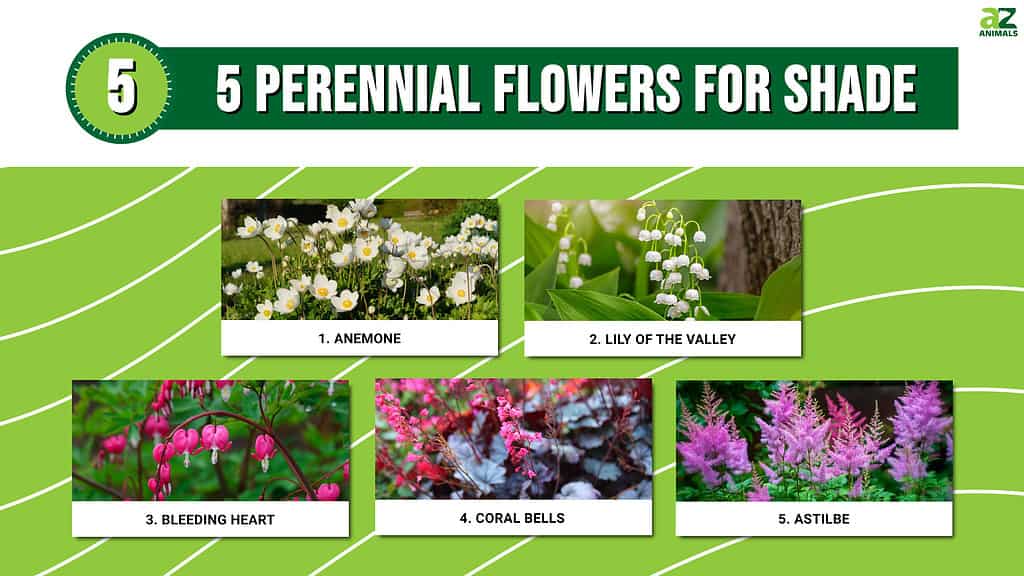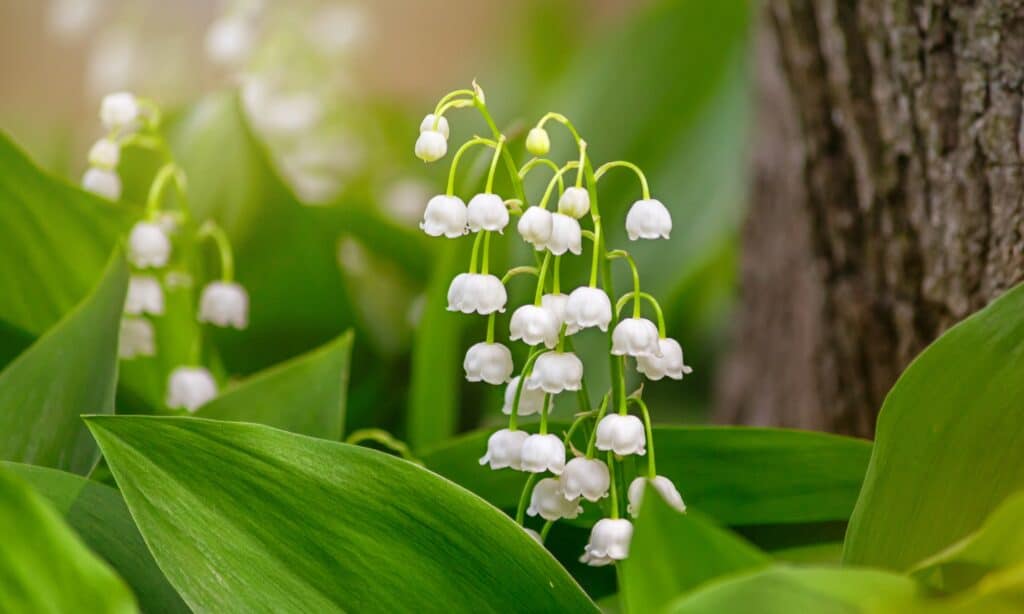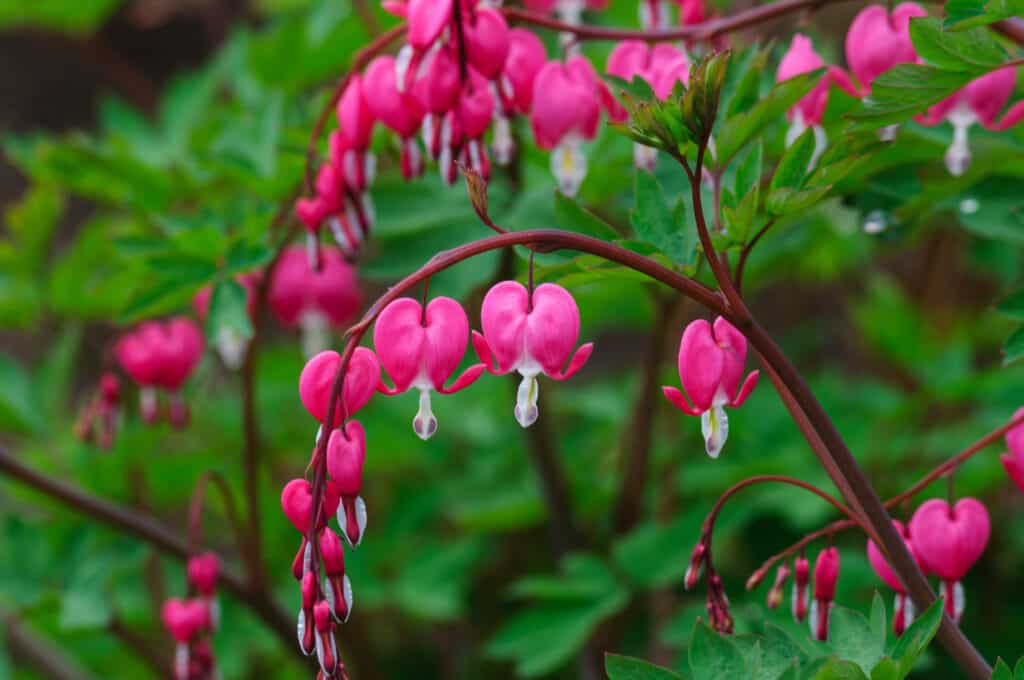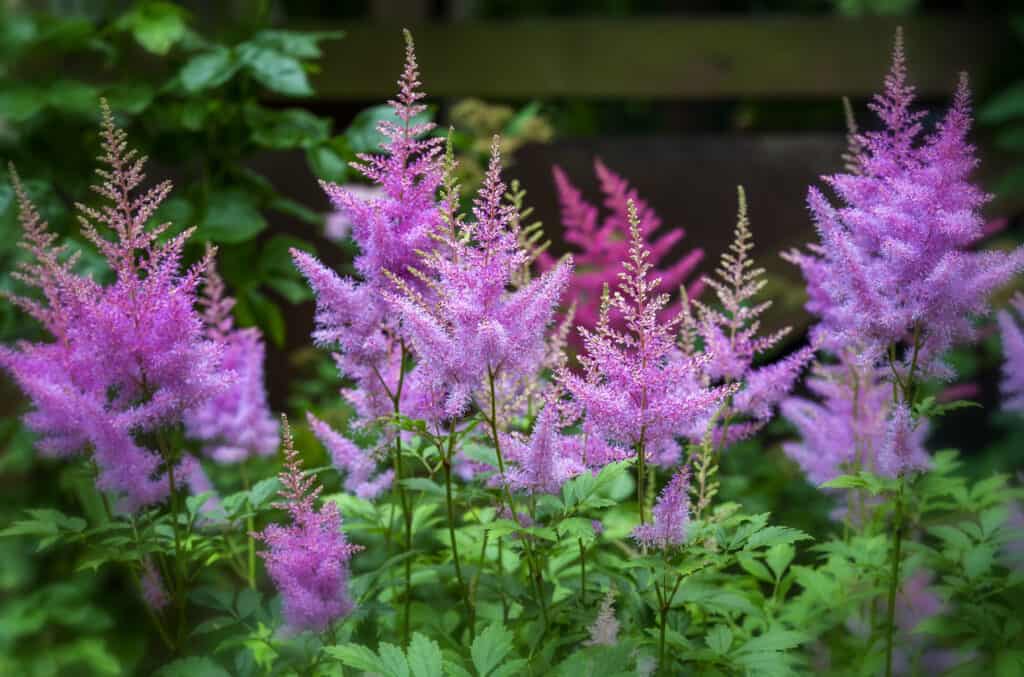Are you thinking about planting perennial flowers for shade?
There are many benefits to adding shade-loving perennials to your garden. For one, they add interest and variety. They also tend to be more drought-tolerant than sun-loving plants, so they’re perfect for those hot, dry summer days. And, because they’re not competing with other plants for sunlight, they tend to grow more slowly, which means they’ll stay lush and green for longer.
What are the best shade-loving perennials? Read on to discover some of the top choices!

1. Anemone

Anemones have a short blooming season.
©Mariola Anna S/Shutterstock.com
Despite its reputation, the anemone is actually a very delicate flower with a rich history. They’ve been making appearances in gardens since the 17th century. They probably were around even earlier than that! These were one of the new plant species European plant explorer’s found in Japan.
Anemone does best in light shade, and they have a very short blooming season. In most cases, they will only bloom for two weeks before their petals begin to fall off. After bloom time has passed, it is important to cut back the anemone’s stems so the plant can focus on storing energy for the next year. With proper care, your anemones will provide you with years of beauty.
2. Lily of the Valley

Lily of the valley is a popular choice in gardens.
©iStock.com/rustamank
Now for an exquisite and fragile flower that has been prized for centuries! Lilly of the valley is native to Europe and Asia and was introduced to North America in the early 1800s. The plant grows best in moist, shaded areas, and its small, white flowers are often used in bridal bouquets. Though it is a beautiful flower, the lily of the valley is also poisonous if ingested. These perennial flowers for shade are still a popular choice for gardens and bouquets. After all, they’re captivating!
3. Bleeding Heart

The bleeding heart flower is an easy plant to grow.
©Vahan Abrahamyan/Shutterstock.com
Bleeding heart is a popular choice for gardeners because of its beautiful, pendulous flowers. The blooms resemble tiny drops of blood and appear in various colors, including pink, red, and white. However, it does prefer a shady spot in the garden and should be protected from strong winds. Too much sun can cause the leaves to scorch, while too little sun will result in fewer blooms.
Make sure to plant bleeding hearts in well-draining soil. These plants do not like wet feet, and too much moisture can lead to root rot. Finally, be careful not to over-fertilize bleeding hearts. A little fertilizer will give them a boost, but too much can cause the leaves to turn yellow. Bleeding heart is a fairly easy plant to grow, and it is relatively tolerant of poor soil conditions. By avoiding these common mistakes, gardeners can enjoy beautiful blooms from their bleeding heart perennials season after season.
4. Coral Bells

Coral bells, also called alumroot, have colorful flowers and leaves.
©iStock.com/Martina Unbehauen
Coral bells are a versatile and beautiful addition to any garden, but they thrive in shady areas. The large leaves of coral bells provide a welcome splash of color in dappled sunlight, and the plants are relatively low-maintenance. In addition, coral bells are deer-resistant and tolerant of both heat and cold, making them perfect for gardens in various climates.
Getting the best blooms for coral bell flowers can be challenging. Here are a few tips to help you get the most out of your coral bell flowers:
Keep an eye on the soil moisture levels and water the plants when the soil begins to dry out. Too much or too little water can cause problems for coral bells. Although they do best in moist soil, coral bells are relatively drought-tolerant once they establish. Finally, provide the plants with a well-balanced fertilizer throughout the growing season. This will help them produce strong and healthy foliage as well as beautiful blooms.
5. Astilbe

Astilbe flowers can help keep your home cool.
©iStock.com/Sansargo
Most gardeners are familiar with astilbes, the beloved shade-loving perennials that add a touch of grace and color to any garden. Astilbes are members of the rose family and are native to Asia and North America. They are also remarkably easy to care for and thrive in almost any type of soil.
These striking perennials are native to woodlands in Asia and North America, so they’re used to growing in shady areas. Astilbe also does well in damp conditions, making it a good choice for areas that stay moist. One of the benefits of shade-loving plants is that they can help to cool your home in the summer.
By planting astilbe in shady areas around your house, you can help to keep your home cooler and reduce your energy costs. And because astilbe comes in a range of colors, including white, pink, and purple, it’s easy to find one that will complement your other plants.
Up Next
- 7 Best Perennial Flowers
- 15 Best Outdoor Perennial Flowers
- The 14 Best Perennial Plants That Come Back Every Year
The photo featured at the top of this post is © iStock.com/Oksana Akhtanina
Thank you for reading! Have some feedback for us? Contact the AZ Animals editorial team.






